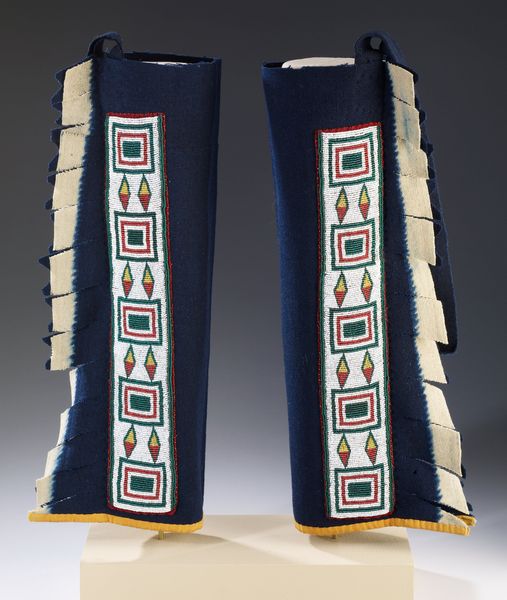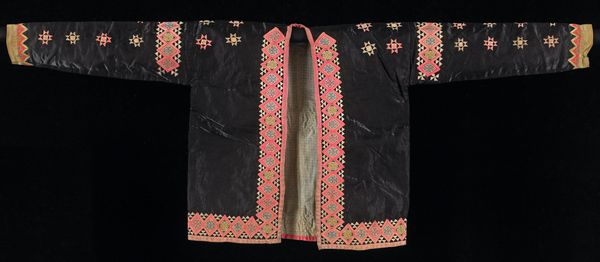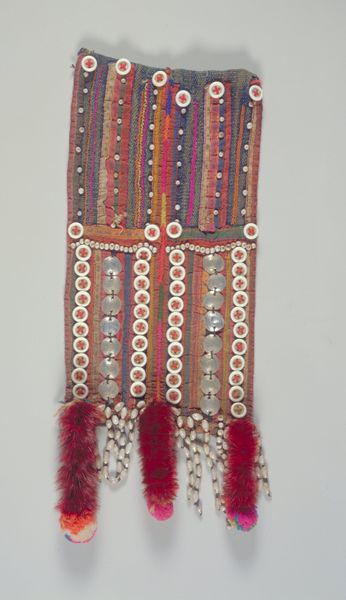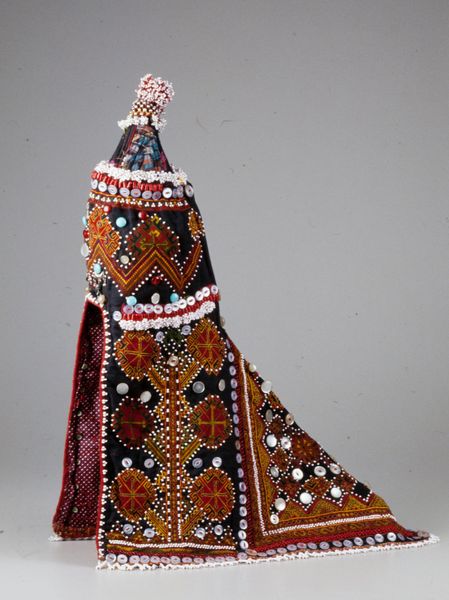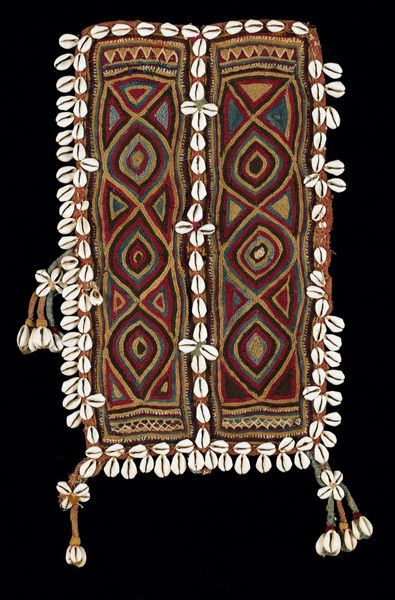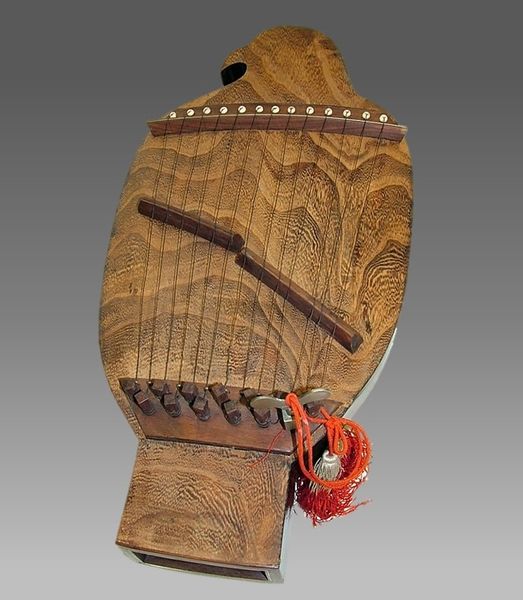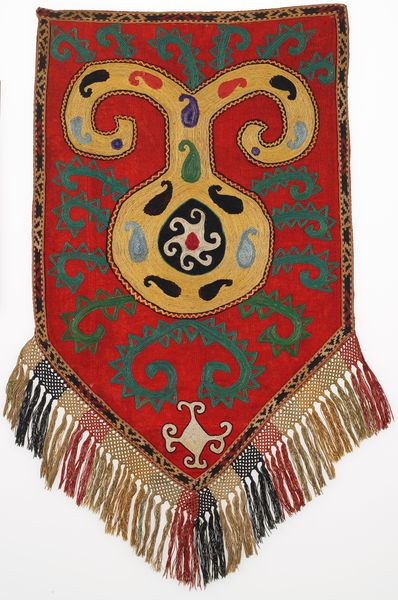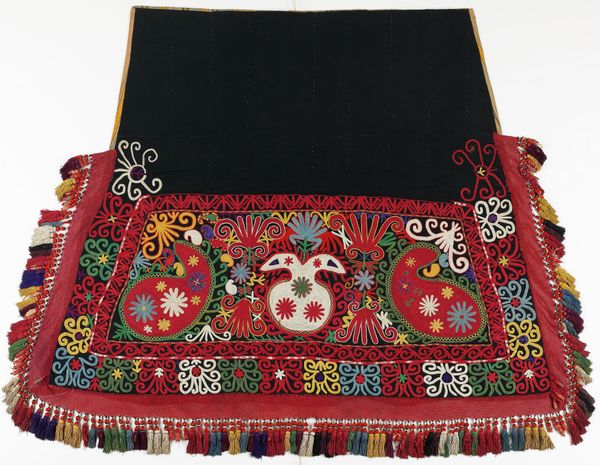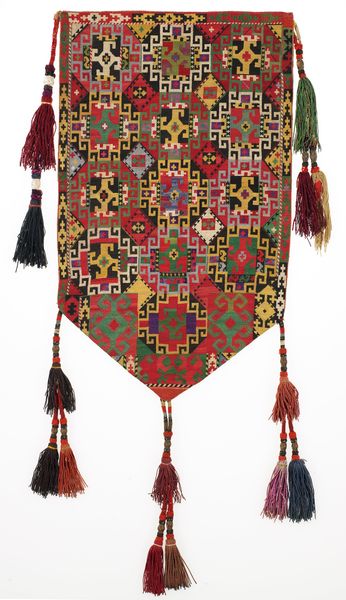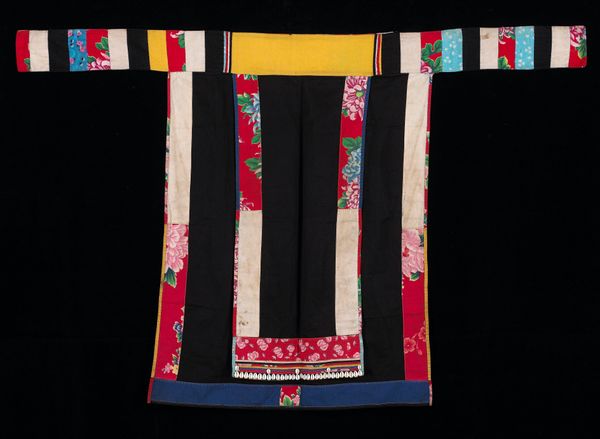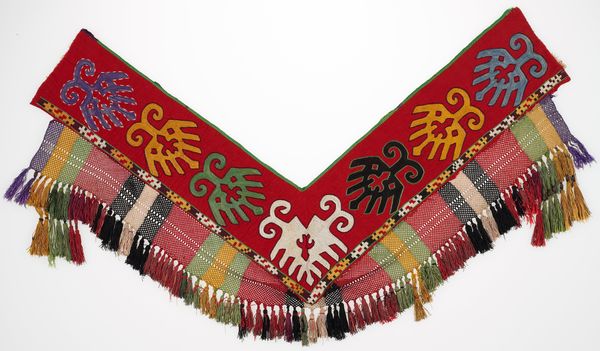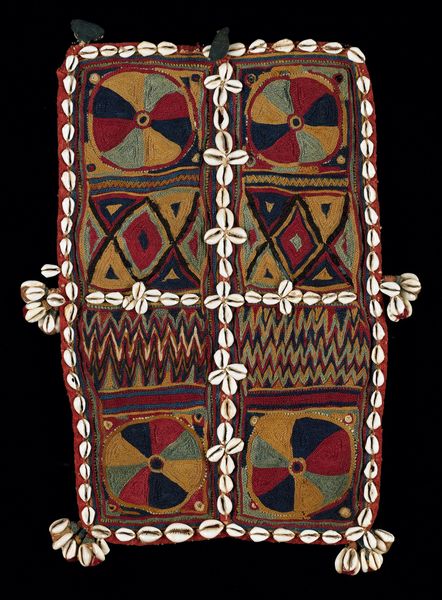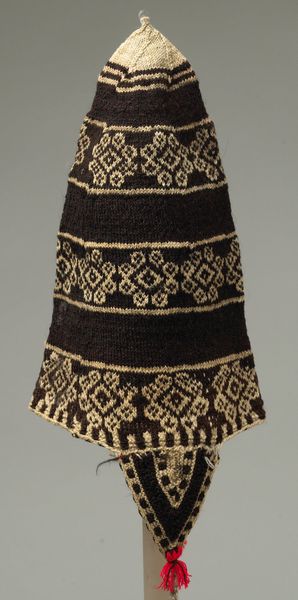
fibre-art, textile
#
fibre-art
#
textile
#
indigenous-americas
Dimensions: 13 5/8 x 8 9/16 in. (34.61 x 21.75 cm) (flat)
Copyright: Public Domain
This hood was made by a Mi'kmaq artist. It’s made of wool, and adorned with beads, silk ribbons, and cotton embroidery. The contrast between the dark wool and the vibrant embellishments speaks to cultural exchange, a dialogue between indigenous aesthetics and European trade goods. The wool itself, likely obtained through trade, provides a dense background for the intricate beadwork and silk ribbons. The beads, meticulously sewn onto the wool, create flowing patterns of curvilinear motifs, and the silk ribbons add bursts of color and texture, transforming the hood into a display of visual richness. Consider the labor invested in this garment – the careful selection and preparation of materials, the precise stitching, and the thoughtful arrangement of decorative elements. The processes of cutting, sewing, and embellishing were undoubtedly labor-intensive, requiring a high degree of skill and patience. All this emphasizes the value placed on artistry within the Mi'kmaq community, transforming the hood into a potent symbol of cultural identity.
Comments
minneapolisinstituteofart almost 2 years ago
⋮
English explorers first described women's Micmac hoods of this type in the 17th century, yet few have survived because they were made of fragile materials. Decorative silk ribbons, highlighted with white beads, can be found along the edging and down the center of the hood. The exact meaning of the double-curved motif that decorates the surface of the hood is not certain; it may be a protective element, or refer to flowers or vines.
Join the conversation
Join millions of artists and users on Artera today and experience the ultimate creative platform.
